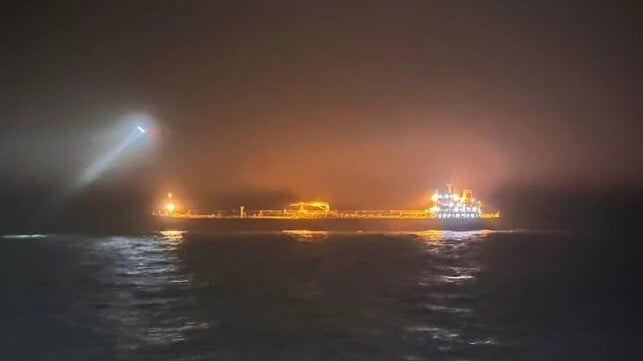"Black Box" on Tanker Eagle S Failed to Record During Cable Break

Investigators who boarded the tanker Eagle S after it severed a subsea power cable found that its voyage data recorder (VDR) had failed to record the time period of the casualty - not because of tampering, but because of an inherent design flaw that turned it off.
On Christmas Day, a power transmission cable and multiple telecom cables in the Gulf of Finland were suddenly severed. Eagle S happened to be under way in the area, and her trackline corresponded to the damage sites. Within hours, Finnish police boarded the vessel by helicopter and diverted it to Porvoo for arrest and examination. At the time of interdiction, the tanker had its port side anchor chain in the water, and a follow-up survey found a 50-nautical-mile drag line on the bottom - along with the damaged anchor.
In early March, Finnish authorities released Eagle S, but detained the master and the first and second officers to await criminal charges. Prosecutors have charged them with aggravated vandalism and aggravated interference with telecommunications, with potential penalties of up to 2.5 years in jail if convicted. The trial is now under way.
Any investigation of potential wrongdoing at sea will start with VDR data, including key parameters of vessel status (heading, speed, engine RPM) and audio of crew conversations on the bridge. But investigators found that Eagle S' VDR had ceased recording on the afternoon of December 18, before the incident, and resumed at about 1300 hours on the 25th. Eagle S crossed and severed the subsea power cable about 30 minutes earlier, while the VDR was not recording.
The investigators found no evidence of tampering with the VDR, but discovered a curious technical cause. The VDR was an older design from the 2000s, and its time stamp system relied on GPS timing signals, without which it could not function. When the Eagle S sailed into the Russian end of the Gulf of Finland - one of the world's most GPS-denied environments - it lost its GPS signal, and the VDR's time reverted to 2005. The system then auto-deleted these older 2005 files to save space in its limited memory, according to YLE. When Eagle S regained GPS, recording resumed - but only after the ship had already cut the power cable.
The officers maintain that they could not reasonably have known that they were dragging an anchor along the bottom, but prosecutors contend that they were negligent in overlooking it. One key piece of evidence presented to the jury this week is an electronic log of the ship's speed, which dropped precipitously in the minutes before the cable break, falling from 12 knots to 9 knots. Engine RPM fell at the same time.
The prosecutors contend that the speed change was a clear indication that something was wrong, and that the crew should have checked the anchors. However, the defense countered that the bridge team had noticed the speed drop and contacted the chief engineer, who informed them that the vessel was having engine problems. The chief engineer (who has not been charged) told the court that the engine was indeed having problems on that voyage, and had been an issue well before the casualty. The officers did not think to go forward and check the anchors, the defense contends, because they were relying upon the chief engineer's professional assessment.
